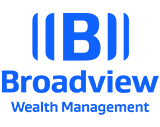
Paving Your Road to Retirement
Insights from experienced financial professionals.
Whatever your age, it’s never too soon to look ahead and begin giving thought to your retirement. With proper planning, you can make the transition to retirement a smooth, comfortable and confident ride.
Today, more than ever, planning for retirement is a necessity. Social Security and company retirement plans are often insufficient to provide the necessary income for a comfortable retirement. You must plan ahead by setting goals and deciding how to pursue them. Retirement planning means not only getting ready for a lifestyle change, but also accepting a changing financial picture. In addition, you may want to consider how much (or how little) you want to leave to your children.
You may be faced with some difficult choices. A comprehensive financial strategy can mean placing your spouse of some fifty years in a nursing home with a pleasant, home-like atmosphere and superior private care vs. being forced to choose a "no-frills" nursing home. Or, it could mean the difference between dining out more frequently vs. preparing more meals at home. Many retirees find themselves balancing between having a sufficient lifestyle and lacking some of the comforts that make life easier. This “give and take” could be alleviated if the proper planning, savings and investing are done ahead of time.
Although pre-retirement and post-retirement investment portfolios should have both income and accumulation aspects, your pre-retirement portfolio should be more heavily weighted toward accumulation for later use. A post-retirement portfolio should show a greater allocation of investment resources toward income-producing vehicles, with a smaller portion allocated for accumulation to generate future income.
You can use different investment management techniques as you create your own portfolio and consider the different investment alternatives available to you. A diversified portfolio can help you prepare for the cyclical nature of financial markets. Diversification may be used to help reduce volatility in the portfolio by spreading your investible assets among various products such as mutual funds, annuities, life insurance and fixed principal vehicles (e.g., money market funds). The majority of all retirement assets today are contributed to tax-deferred retirement plans through employers or through individual retirement accounts (IRAs).
The fact that Uncle Sam allows tax-deferred accumulation to fund retirement through certain investment vehicles, such as IRAs and employer-sponsored pension funds, provides a stimulus for increasing the amounts going into them.
When considering mutual funds, a wise approach may be to choose a family of funds. Under this arrangement you will be able to take the amount allocated for mutual funds and break it down further by positioning a specific percentage in either income funds, growth funds or a mixture of both. In addition, these same families of funds can include municipal bond funds, which distribute tax-free, which can be useful when you want to reduce your tax obligations during retirement. However, remember that when investing in mutual funds or any other security, investment return and principal value will fluctuate due to market conditions. When shares are redeemed, they may be worth more or less than their original cost.
If you are financially independent at retirement, you may never experience a period of boredom and disenchantment. Rather, it can become a time of new opportunities when you can try a second career, develop a new lifestyle or pursue new dreams and goals. You can start now to work towards making your retirement years your most stimulating, fulfilling time ever--truly your golden years.
Looking for assistance? We're here to help. Contact Us for general questions or Schedule an Appointment with a financial advisor.
The opinions voiced in this material are for general information only and are not intended to provide specific advice or recommendations for any individual security. To determine which investment(s) may be appropriate for you, consult your financial professional prior to investing. Investing involves risks including possible loss of principal. No investment strategy or risk management technique can guarantee return or eliminate risk in all market environments. This information is not intended to be a substitute for specific individualized tax advice. We suggest that you discuss your specific tax issues with a qualified tax advisor. There is no guarantee that a diversified portfolio will enhance overall returns or outperform a non-diversified portfolio. Diversification does not protect against market risk. This article was prepared by Liberty Publishing, Inc. LPL Tracking #1-05179805


